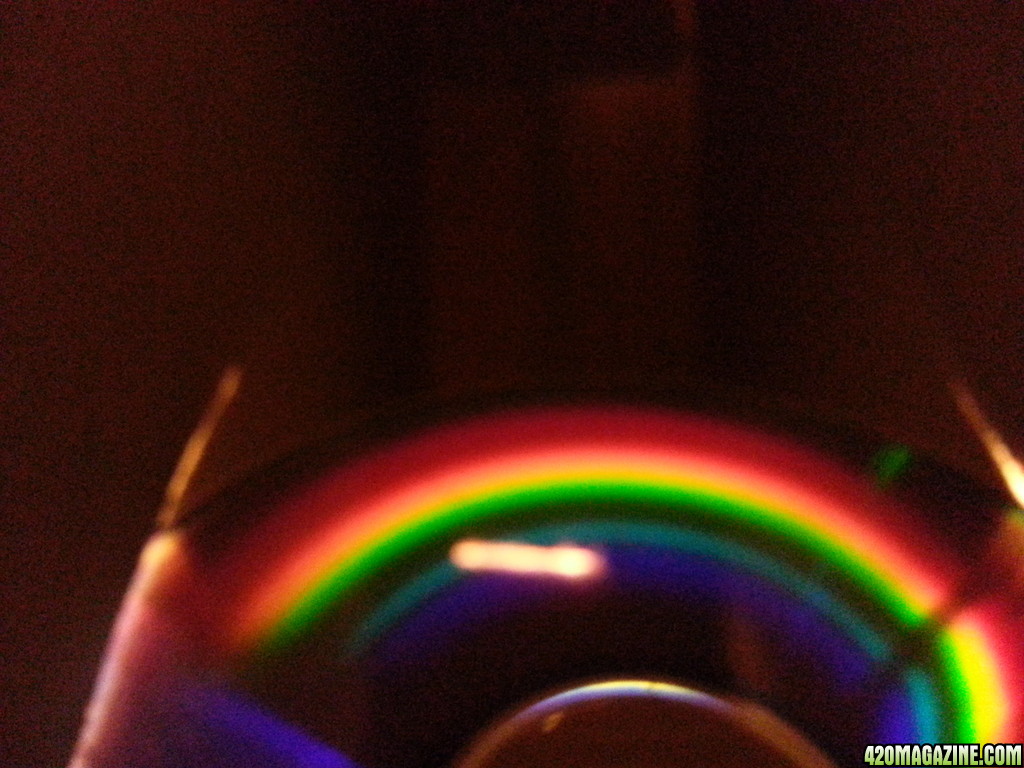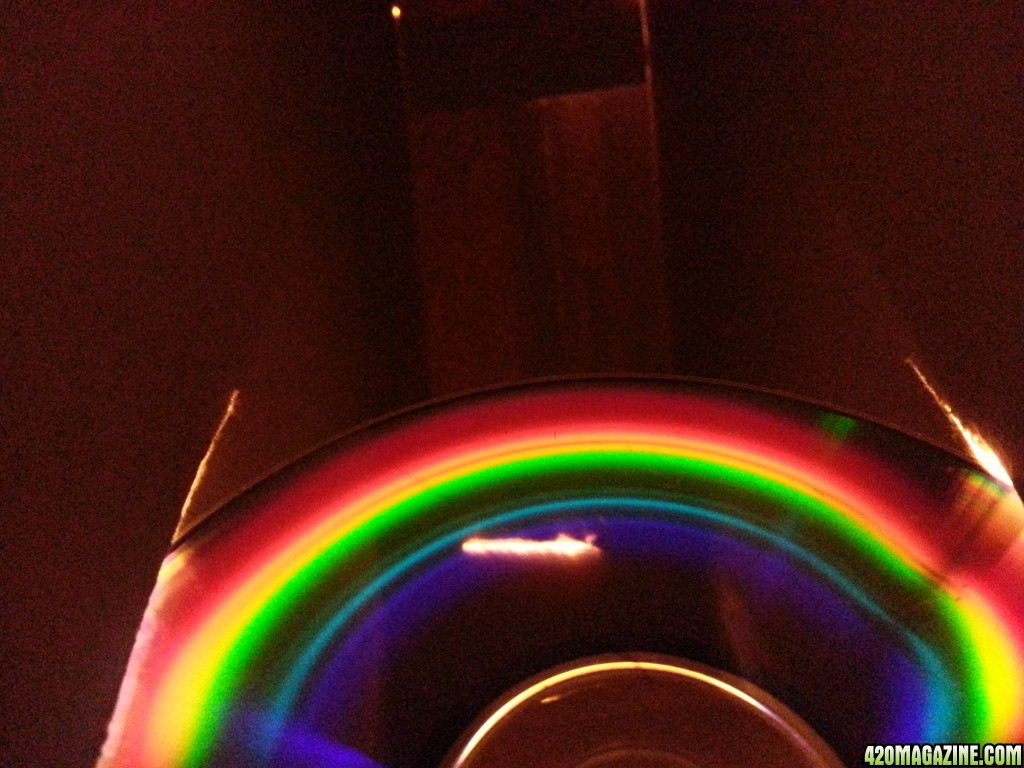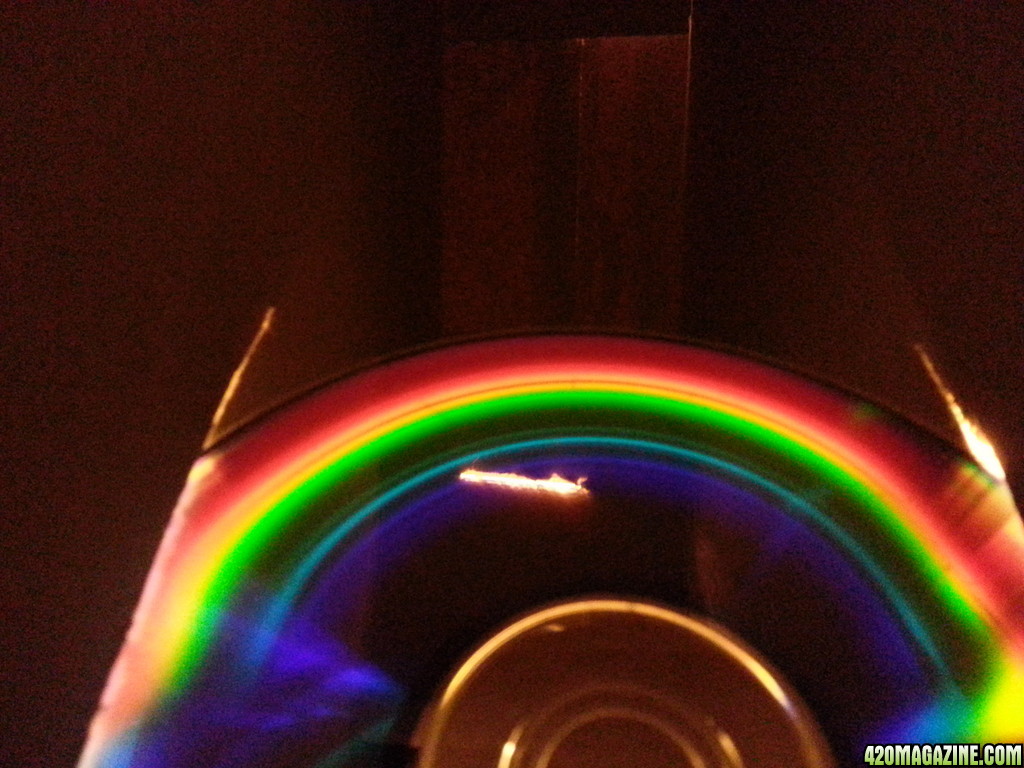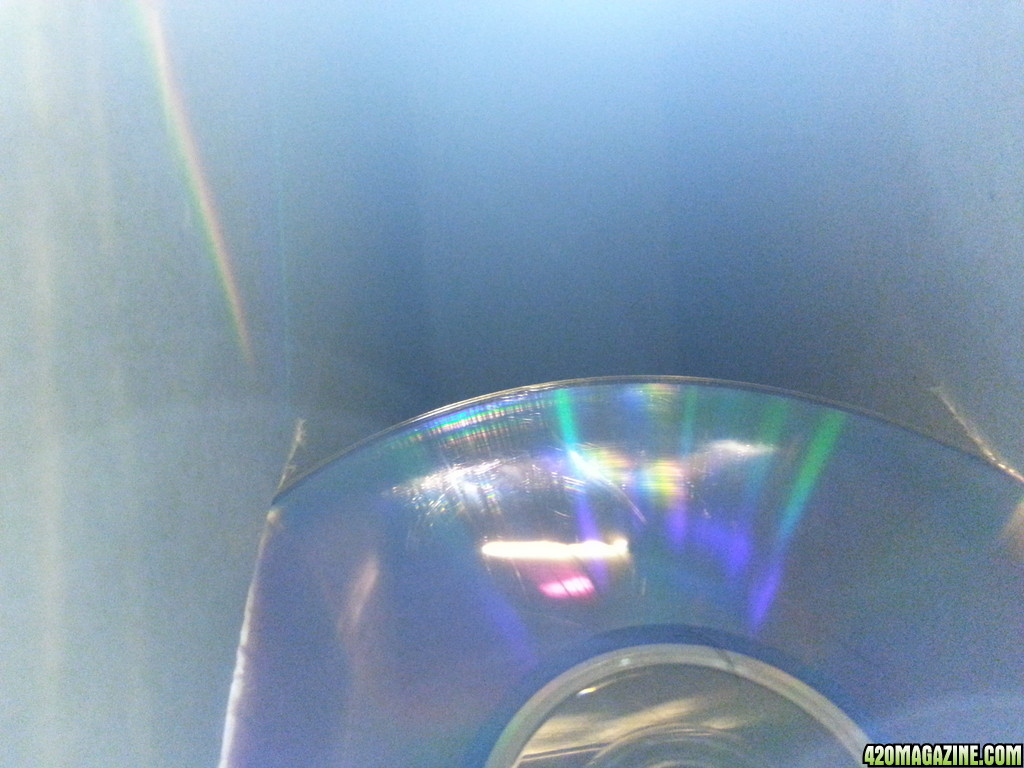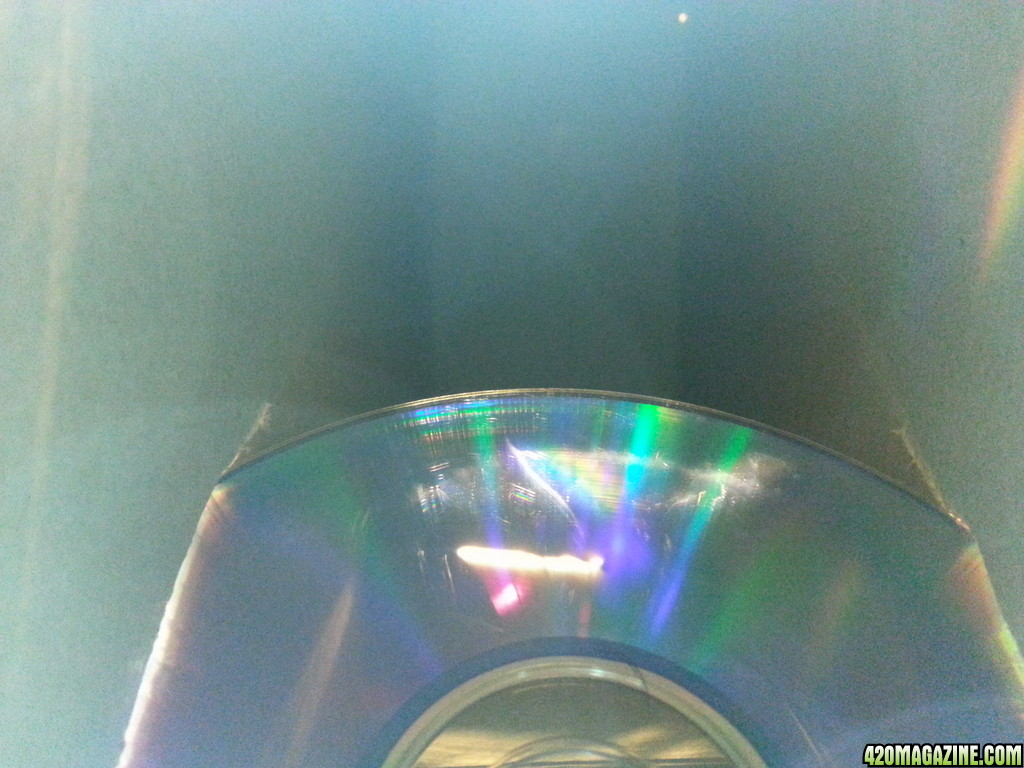Hey everyone...
I did not invent this idea but I did want to share it here at 420 Magazine, since it applies to growing. I learned how to make a Spectrometer on You Tube, but its really quite simple so I will try to explain.
What it is:
A spectrometer to put it quite simple, takes the light you see (sun, HPS, MH, lightbulb..whatever) and breaks it apart so that each spectrum of light is visible... When you buy a HID bulb and are looking at the spectrum charts, you are basicly looking at a similar image of what you would see through a spectrometer.... Like looking at a rainbow...
Now What do you need...
A cereal box..
A silver cd or cdr...you could use colored ones but wont get a good refection.
scissors
packing or duct tape
a light source
eyes
marker
How do you make it:
Take the cereal box..*empty of course* and tape up the open end with duct tape...make sure you tape it closed good so that all light would be blocked out...
Next...
Now take the closed cereal box and flip it around so you are looking at the factory sealed end. Along the long, skinny side of the box...measure about 2" from the factory sealed end and draw a line from front face to back face (across the skinny side of the box)
After you have your line on the skinny side of the box...Cut a slit across the skinny side of the box, where you placed the line. Now that you have a slit across this area... you are going to (on each side of the slit) cut downwards and away from the "factory sealed" side of the box, at about a 45 degree angle... Cut about 2-3" down on each side... This is where you are going to slide the CD, with the silver shinny reflective side facing the "factory sealed" side of the box..
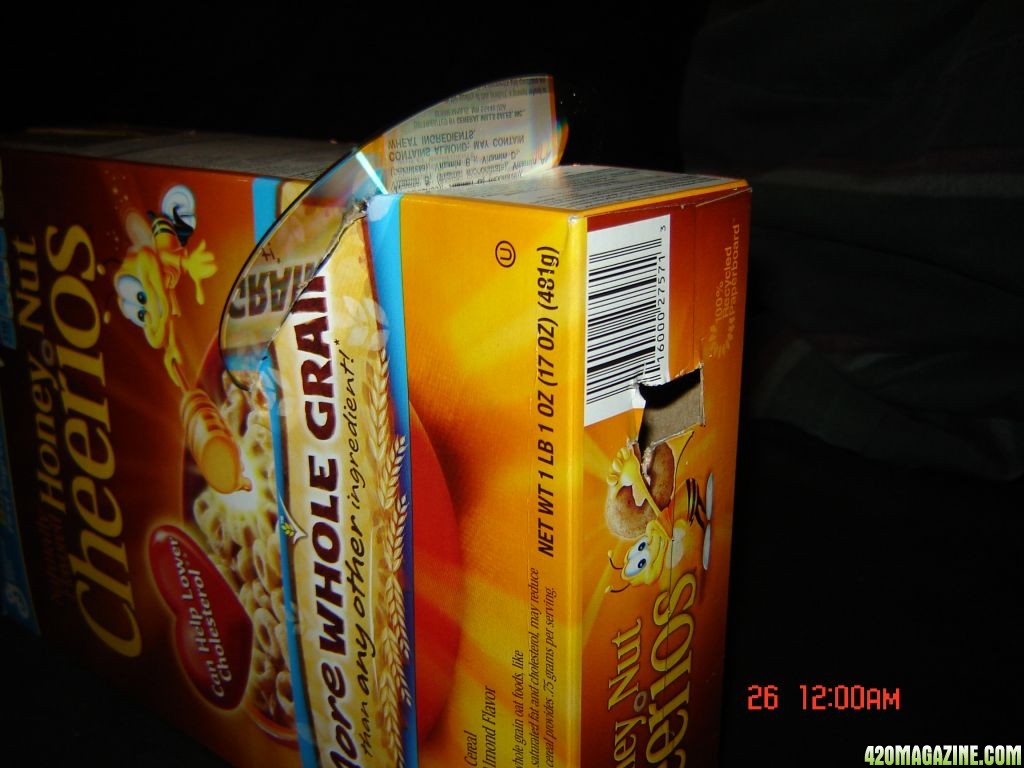
After you have your CD inserted in the box...
On the factory sealed side of the box...about 1 1/2 to 2" down you are going to cut an eyehole... it can be square or round, I made mine square for better photo capturing abilities however either will work. Make this eyehole about 1/2" in diameter, enough you can comfortably look through, but not big enough to let a lot of light in..
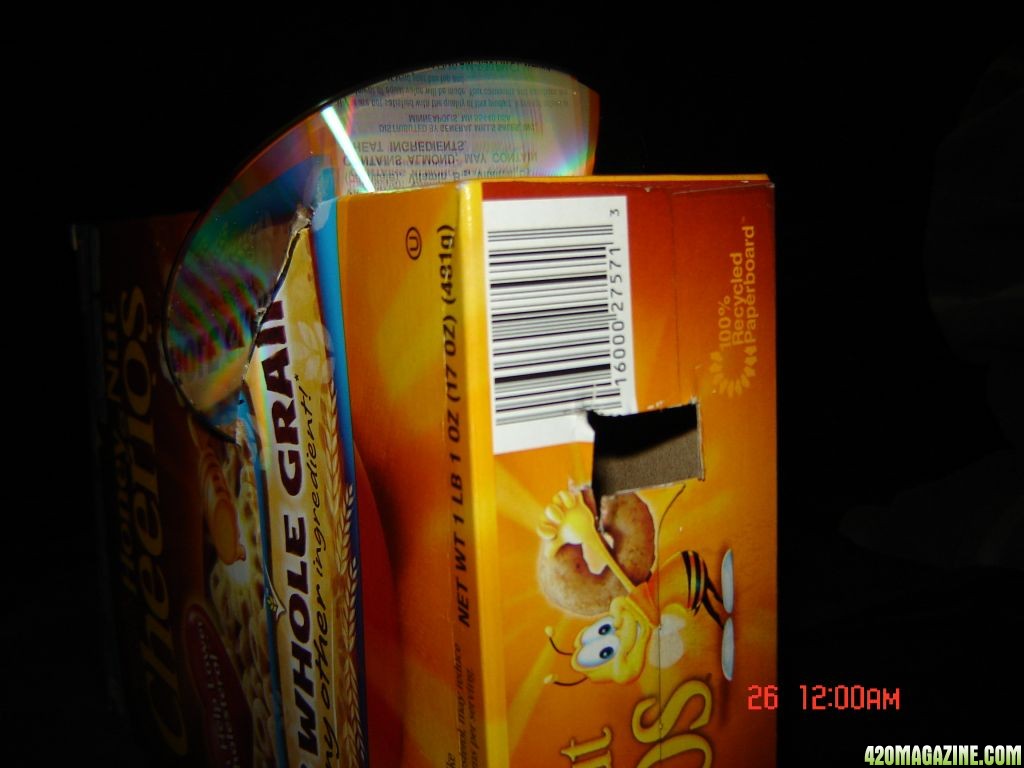
After you have your eyehole..
On the long skinny side of the box...opposite the CD and slit you created...
You are going to cut 1 slit in the box, about 1 1/2" from the factory sealed side of the box. You want this slit to have a very clean edge, so use a razor, or my trimming scissors worked well The slit should be around 1" long, and wide enough were you could slip a dime (the coin, not the sack..
The slit should be around 1" long, and wide enough were you could slip a dime (the coin, not the sack..  ) through the slit.... This is going to be where you let the light through...
) through the slit.... This is going to be where you let the light through...
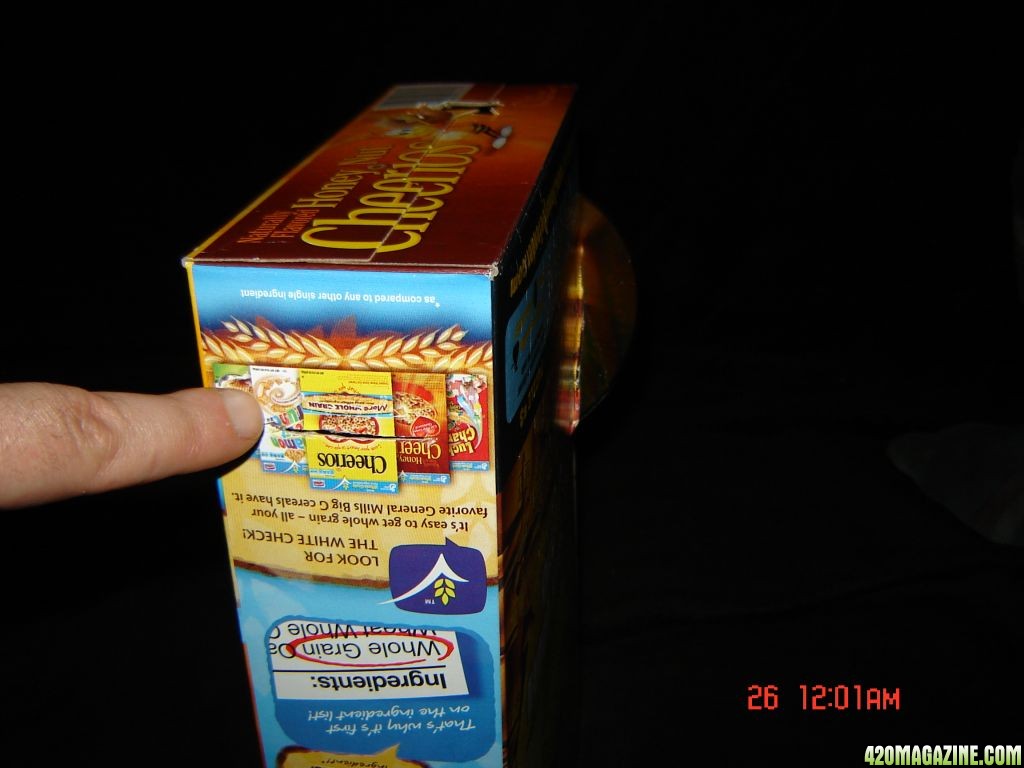
Now you are done take this and look at various light sources through it, its pretty impressive...
take this and look at various light sources through it, its pretty impressive...
Here are some photos of my bulbs...Take a notice at the peaks on the following charts, and then look at the brightest bands on the photo's I took, see how close they are...
Ushio Optiblue 400w MH
The Chart is first, my photo 2nd
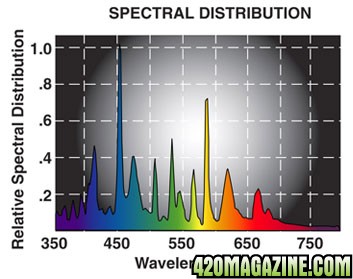
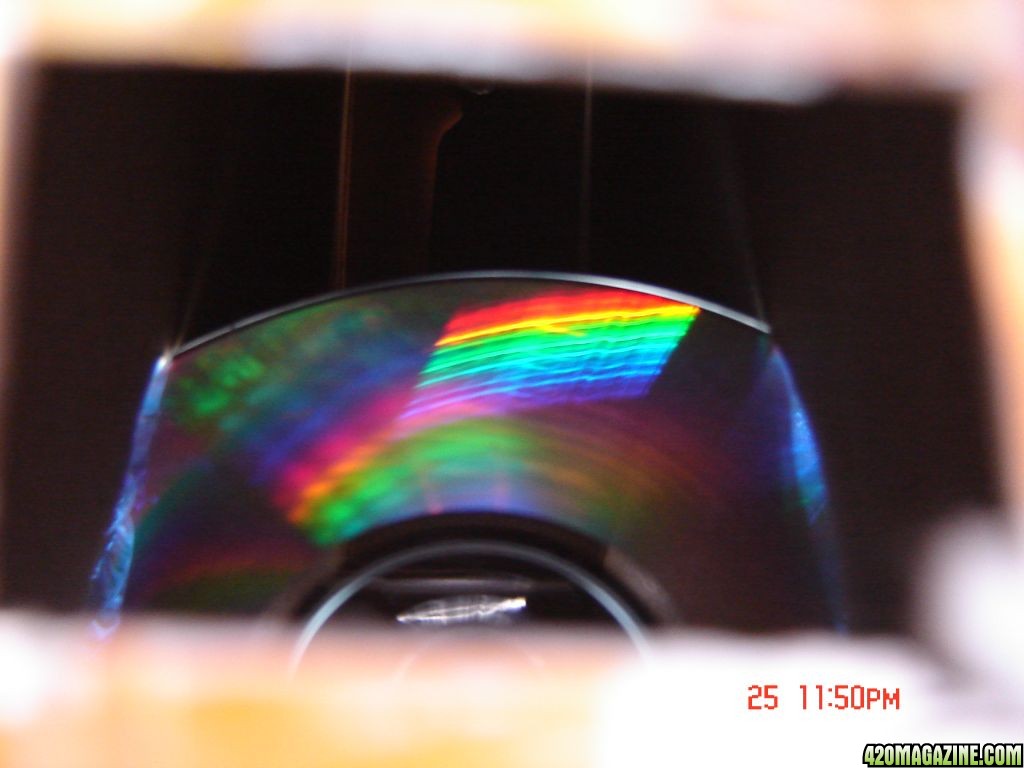
Here is the Chart for the 400w Ceramic Metal Halide and a Typical HPS bulb
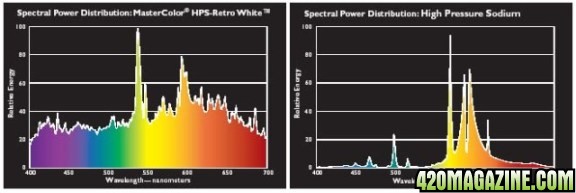
Now look how the spectrometer picked up the light frequencies..
Ushio OptiRed 600w HPS (running at 400w)
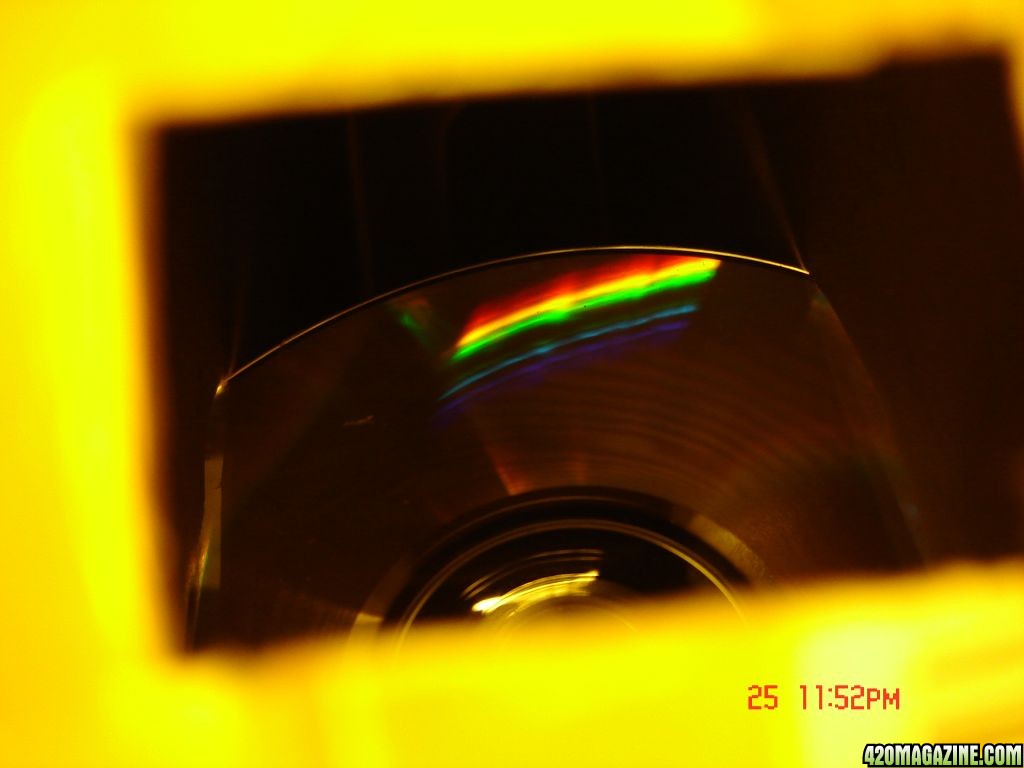
Phillips RetroWhite 400w CMH
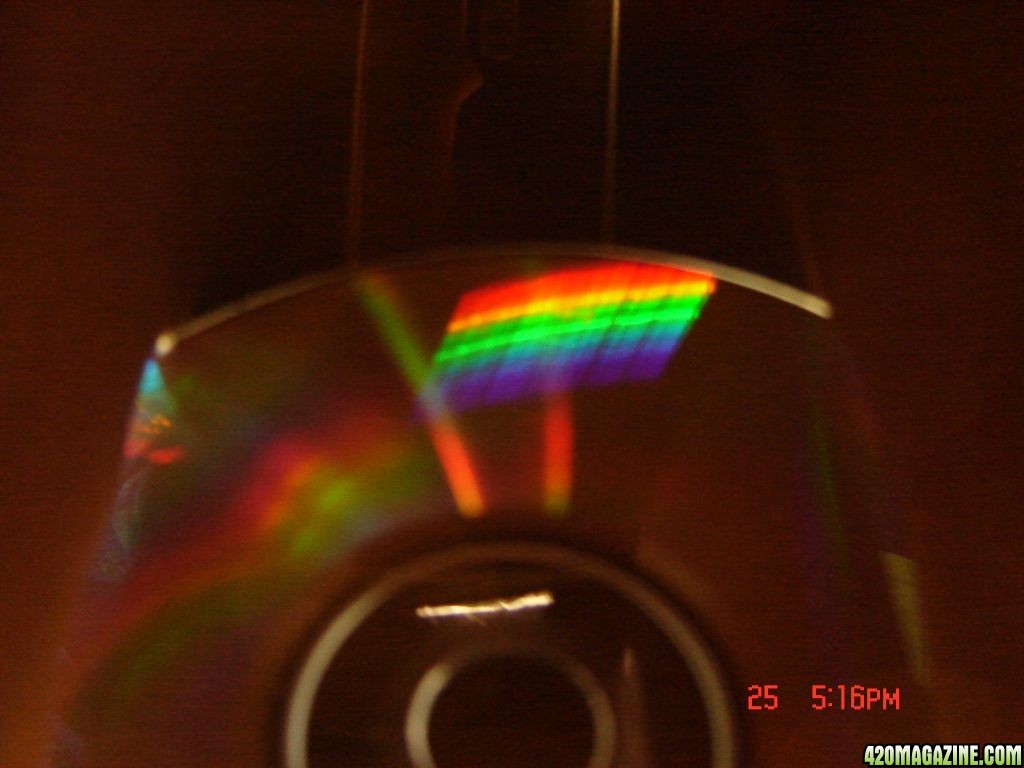
I did not invent this idea but I did want to share it here at 420 Magazine, since it applies to growing. I learned how to make a Spectrometer on You Tube, but its really quite simple so I will try to explain.
What it is:
A spectrometer to put it quite simple, takes the light you see (sun, HPS, MH, lightbulb..whatever) and breaks it apart so that each spectrum of light is visible... When you buy a HID bulb and are looking at the spectrum charts, you are basicly looking at a similar image of what you would see through a spectrometer.... Like looking at a rainbow...
Now What do you need...
A cereal box..
A silver cd or cdr...you could use colored ones but wont get a good refection.
scissors
packing or duct tape
a light source
eyes
marker
How do you make it:
Take the cereal box..*empty of course* and tape up the open end with duct tape...make sure you tape it closed good so that all light would be blocked out...
Next...
Now take the closed cereal box and flip it around so you are looking at the factory sealed end. Along the long, skinny side of the box...measure about 2" from the factory sealed end and draw a line from front face to back face (across the skinny side of the box)
After you have your line on the skinny side of the box...Cut a slit across the skinny side of the box, where you placed the line. Now that you have a slit across this area... you are going to (on each side of the slit) cut downwards and away from the "factory sealed" side of the box, at about a 45 degree angle... Cut about 2-3" down on each side... This is where you are going to slide the CD, with the silver shinny reflective side facing the "factory sealed" side of the box..
After you have your CD inserted in the box...
On the factory sealed side of the box...about 1 1/2 to 2" down you are going to cut an eyehole... it can be square or round, I made mine square for better photo capturing abilities however either will work. Make this eyehole about 1/2" in diameter, enough you can comfortably look through, but not big enough to let a lot of light in..
After you have your eyehole..
On the long skinny side of the box...opposite the CD and slit you created...
You are going to cut 1 slit in the box, about 1 1/2" from the factory sealed side of the box. You want this slit to have a very clean edge, so use a razor, or my trimming scissors worked well
 The slit should be around 1" long, and wide enough were you could slip a dime (the coin, not the sack..
The slit should be around 1" long, and wide enough were you could slip a dime (the coin, not the sack..  ) through the slit.... This is going to be where you let the light through...
) through the slit.... This is going to be where you let the light through...Now you are done
 take this and look at various light sources through it, its pretty impressive...
take this and look at various light sources through it, its pretty impressive...Here are some photos of my bulbs...Take a notice at the peaks on the following charts, and then look at the brightest bands on the photo's I took, see how close they are...
Ushio Optiblue 400w MH
The Chart is first, my photo 2nd

Here is the Chart for the 400w Ceramic Metal Halide and a Typical HPS bulb

Now look how the spectrometer picked up the light frequencies..
Ushio OptiRed 600w HPS (running at 400w)
Phillips RetroWhite 400w CMH




 +reps for sharing that
+reps for sharing that u man!!
u man!!